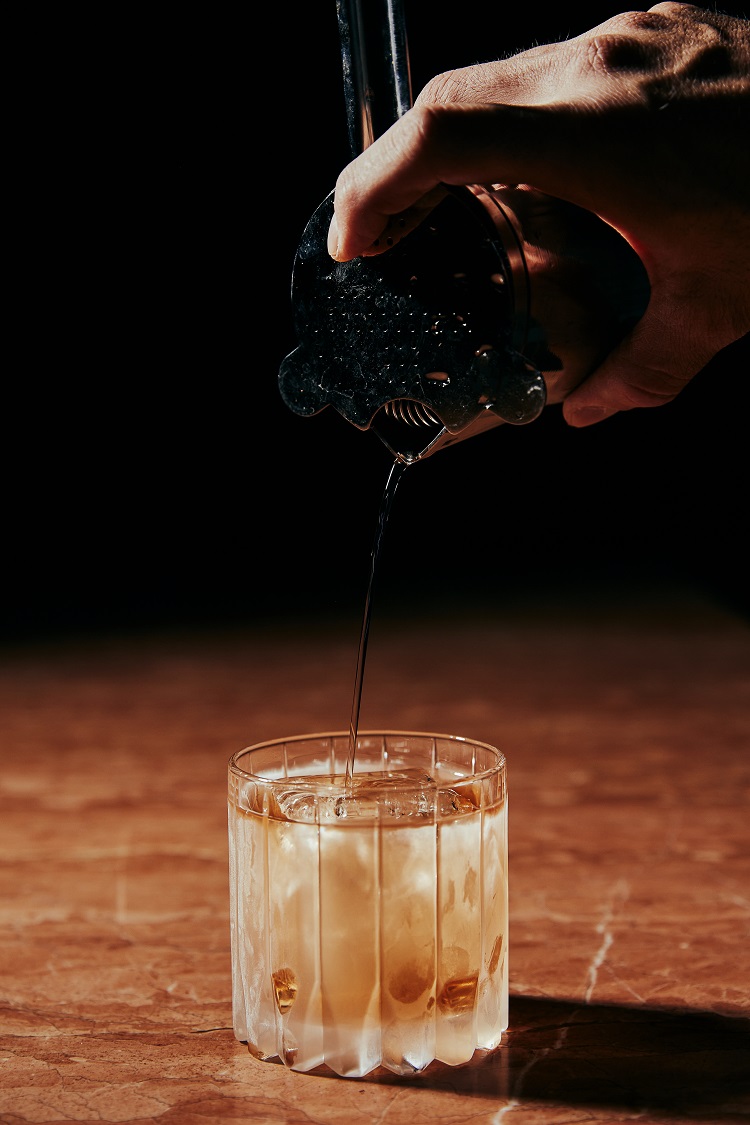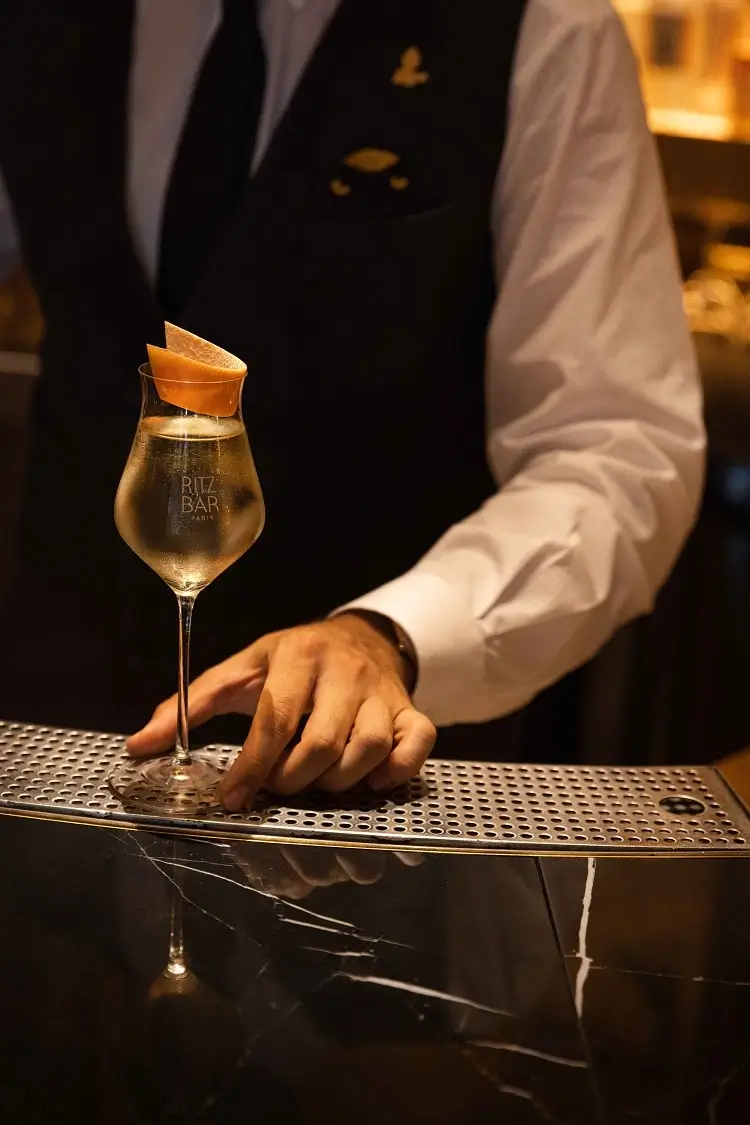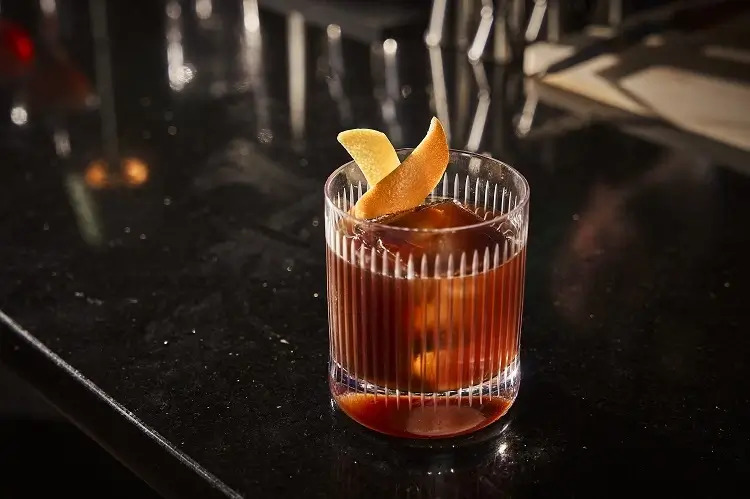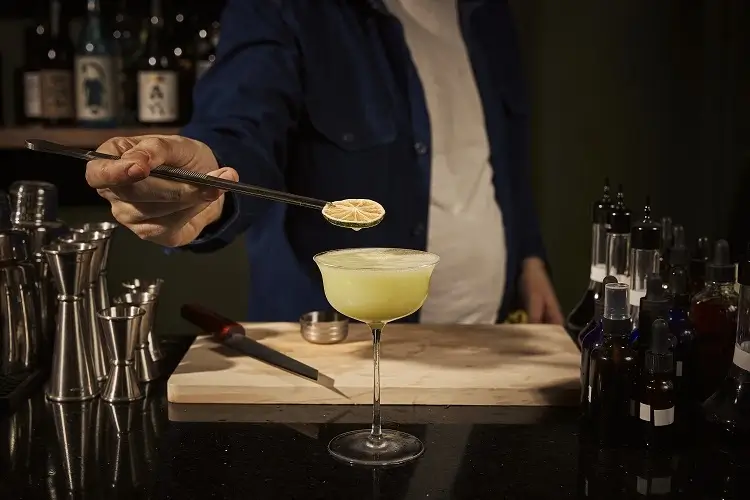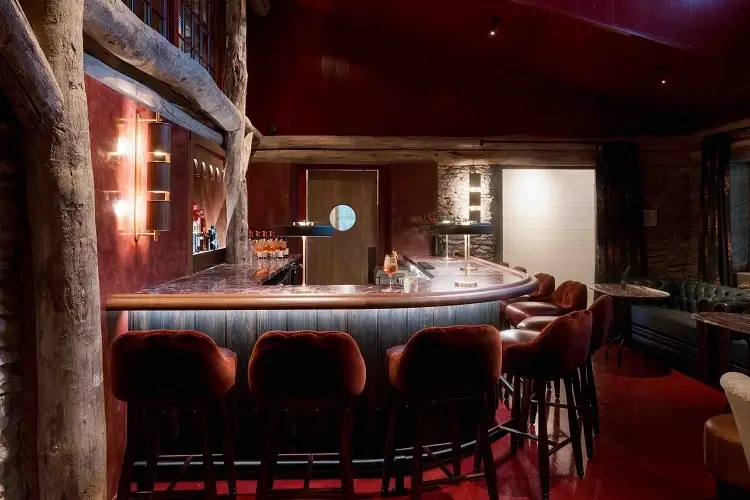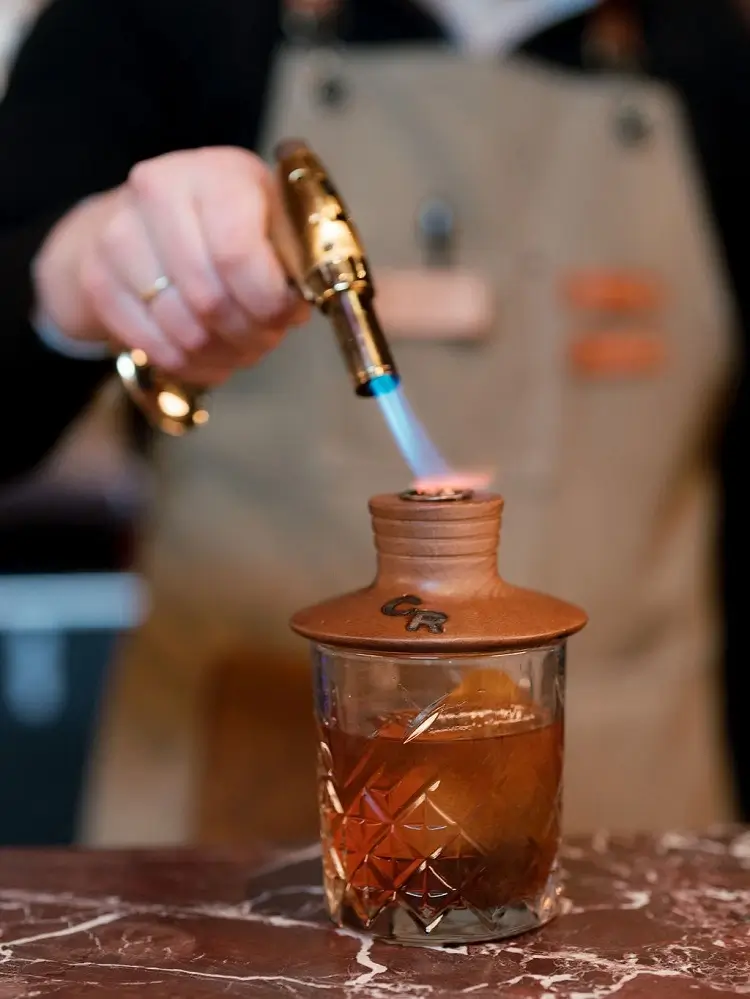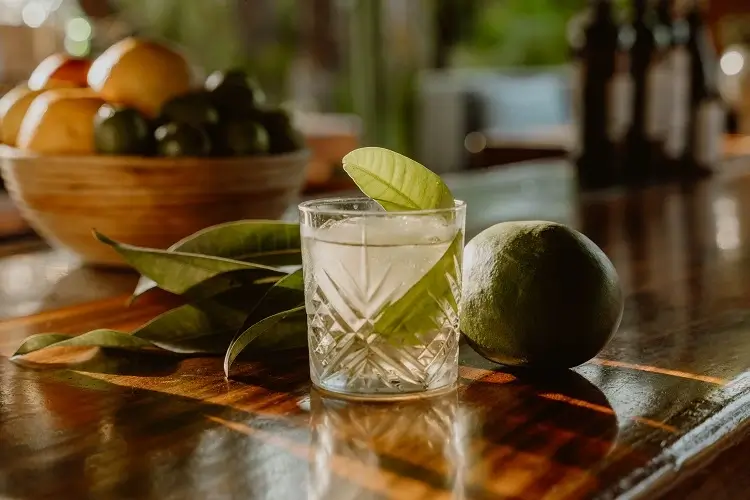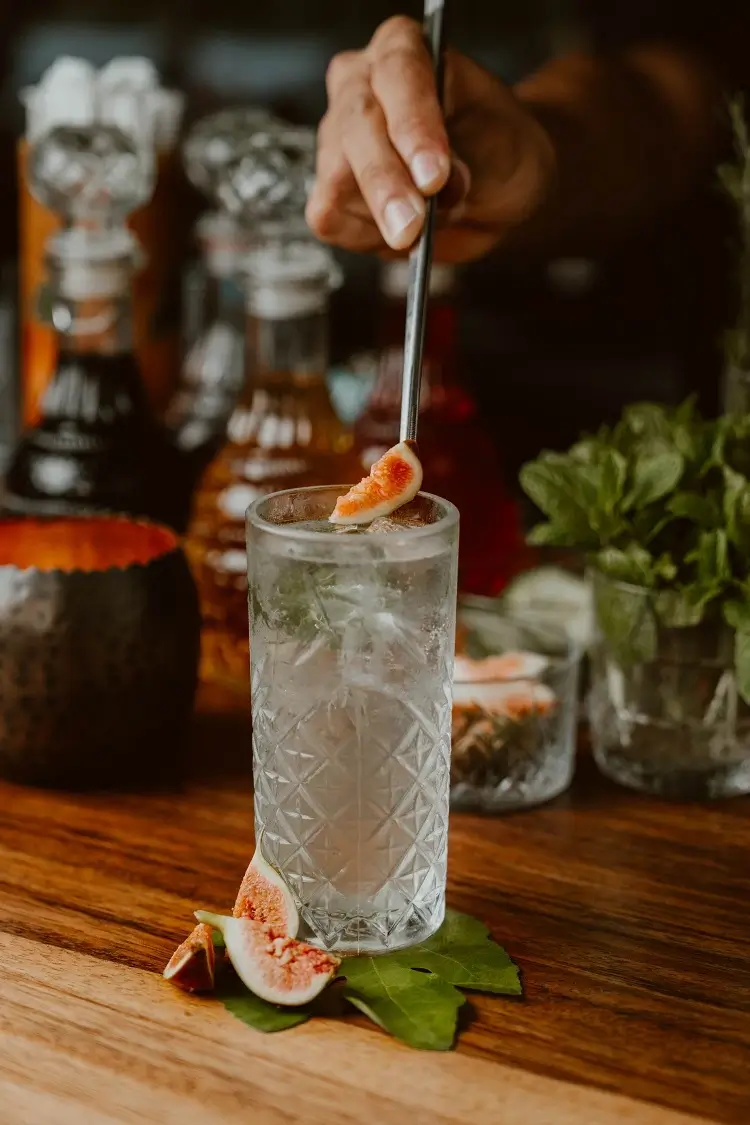At a majority of bars around the world, there’s an unwritten standard for drinks to be categorized according to their base spirit. Imbibers’ eyes are often drawn to their preferred spirit—tequila, whiskey, vodka, gin, rum—and while the beverage may feature a unique ingredient, the attention is still on the alcohol or brand, which doesn’t leave much opportunity for a new experience.
At The Ritz Bar in Paris, head bartender Romain de Courcy presents a cocktail menu that challenges tradition, removing the emphasis on the base spirit by building a rotating selection of long drinks, short drinks and non-alcoholic beverages with homemade tinctures, syrups and cordials from seasonal ingredients synced up to the biodynamic calendar.
“For me the spirit is just one of the ingredients—sometimes it is even dispensable,” said de Courcy, who says he only uses a specific kind of spirit if it supports the story he wants to tell and the ingredients he wants to use, but even then its likely going to be a custom-distilled spirit for the Ritz Bar. Instead, the cocktail menu presents a dozen curated drinks that each focus on a single ingredient of flowers, fruits, leaves or roots. “When we shift focus to the product, it forces us to truly explore its diversity: different varieties, different locations,” explained de Courcy. For their most recent ginger cocktail, for example, the team sourced ginger from Peru, the Ivory Coast, Madagascar and India. “And they all taste different,” said de Courcy.
The Lavender cocktail is another spring creation which can surprise guests—built with Lavender eau de vie, four lavender essences, lavender infusion, lavender honey and topped with bubbles. “I love flowers because they are often at the same time the most delicate and the most powerful ingredients,” said de Courcy, who added that high-quality lavender “can be extremely complex and evoke juicy red fruits, black pepper and herbaceous notes.” Jasmine is another single-ingredient cocktail, which, depending on its varieties, times of the day and ways of extraction, “can be floral but also fruity, honeyed, even leafy and animalic,” de Courcy furthered.
It’s not surprising to witness a shift toward these more natural libations as it supports the broader movement of better-for-you ingredients that’s proliferated in the culinary world. In Philadelphia, bartender and trained ethnobiologist Danny Childs champions a more holistic bar menu at Almanac by using botanical ingredients that are either foraged from the wild or sourced from his garden or a local farm.
“It helps the guest to associate a flavor profile with the drink rather than a specific brand or spirit category,” said Childs about the pendulum shift toward prioritizing drink ingredients over base spirits. “To me this is a more culinary approach to menu creation, and one that I find that guests can relate to more.”
Indigenous ingredients like black walnuts are used to make Alamanc’s house nocino (an Italian liqueur typically made from green, unripe walnuts and enjoyed as a digestif). White pine is infused into their housemade Alpine amaro while homegrown ingredients like red shiso, American persimmon and fig leaf are reserved for infusions and tinctures. Almanac’s house digestivo is created solely from local botanicals, including foraged, indigenous wild grapes, mugwort and juniper as well as purple shiso leaf, bronze fennel and mint.
The Tack Room at Cataloochee Ranch in North Carolina’s Smoky Mountains also uses its surroundings to inspire its bar program with seasonal ingredients from its 700 acres. “We build the spirit around the ingredient versus the other way around to ensure that the local ingredient is the star,” explained lead bartender, Stephanie Watson. The Mountain Muscadine beverage is a prime example of their philosophy, by using local muscadine grapes that are rendered down with molasses and vanilla then paired with a sweeter bourbon and touch of lemon juice to emulsify the ingredients. Watson has also prioritized wild mountain mint, ranch-foraged elderberry and garden-fresh tomatoes, adding that “each season brings new ideas with a bounty of interesting and inspiring ingredients.”
Aaron Salgado, head bartender at Villa Santa Cruz in Todos Santos, Mexico emphasized his appreciation for the challenge of crafting drinks according to what produce is in season. “For me, it’s more than a trend, it’s a way to make cocktails that feel truly special and connected to the place they’re served,” said Salgado. The onsite garden at Villa Santa Cruz supplies many of Salgado’s cocktail creations with freshly plucked ingredients like lemongrass, cherry tomatoes, basil, mint, cilantro, lavender, rosemary, sage and edible flowers. “I’m big on infusions, using fresh herbs, flowers and fruits to build deeper, layered flavors,” he said, noting one of his favorite drinks to highlight is the Brisa del Mar, or sea breeze in Spanish, that’s built around lemongrass tea, fresh basil, lemon and honey from their estate beehives. “Tequila is in there, too, but it’s all about complementing the natural flavors rather than stealing the spotlight. The result is a beautifully clear drink that captures the coastal vibe of Baja.”
The bar at Acre Resort in Los Cabos is another Baja-based program that relies on using their garden’s ingredients, with a concentrated effort on highlighting native and endemic flavors like mango, fig, guava, kaffir lime and zebra lemon. Each drink is crafted to emphasize the purity of its ingredients as the star of the show. The Fig Collins, for example, prioritizes a base of housemade fig leaf soda while the “Guayabita” cocktail reflects its Spanish name of “little guava” with guava leaf-infused mezcal (Acre’s own brand).
As these bars all prioritize the natural ingredients, their cocktail lists come with a subsequent benefit that inherently satiates the lower alcohol movement that’s being felt in the industry. “A third of the drinks on our menu at the Ritz Bar are below 10 percent alcohol,” said de Courcy, noting that another third are non-alcoholic. “And yet they stand up against any stronger drinks in terms of complexity, intensity, texture and length.” He acknowledged that classic cocktails might continue to prove the easiest way to shake up a balanced drink in locations where there’s limited access to fresh ingredients, but they are no longer the only way to create full flavor.
For a taste of what these bars are doing, try experimenting with your own garden-grown ingredients this summer—strawberries make exceptional purées and cordials that each showcase the berry’s distinct flavors of tart and sweetness. Whereas, herbs like basil, mint and lemongrass can be grown year-round in the kitchen for homemade infusions and reductions.


